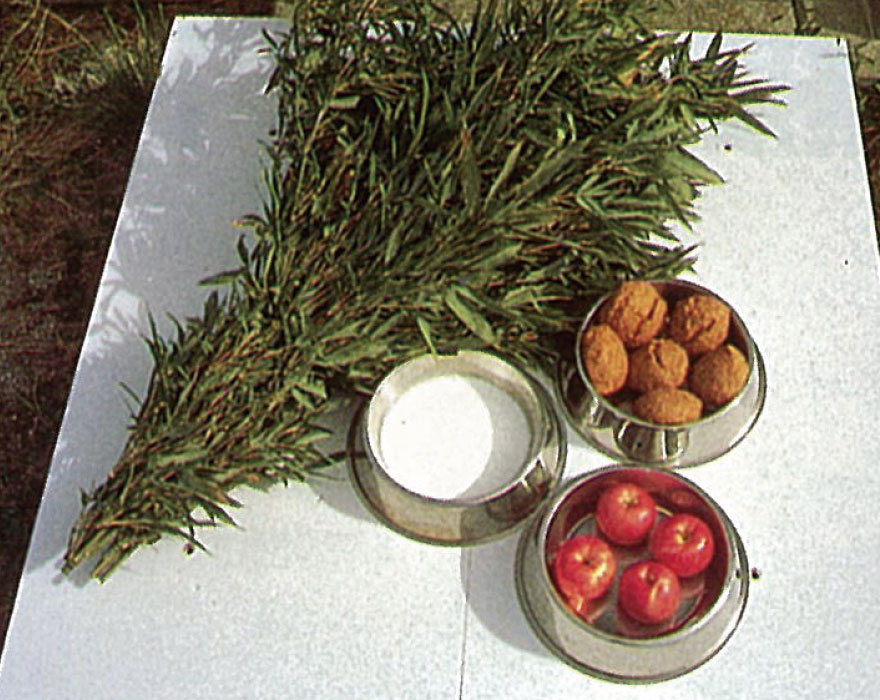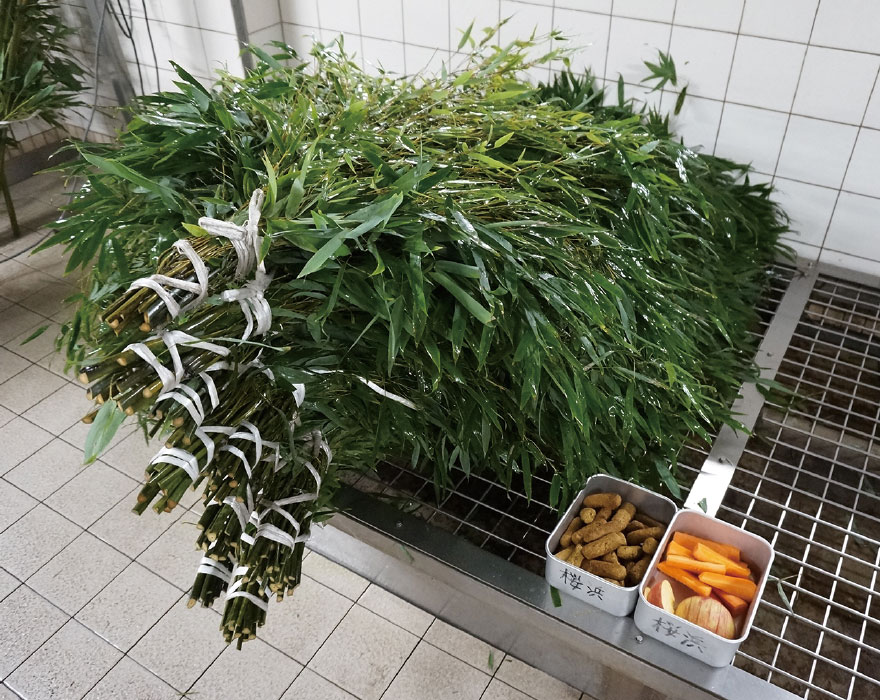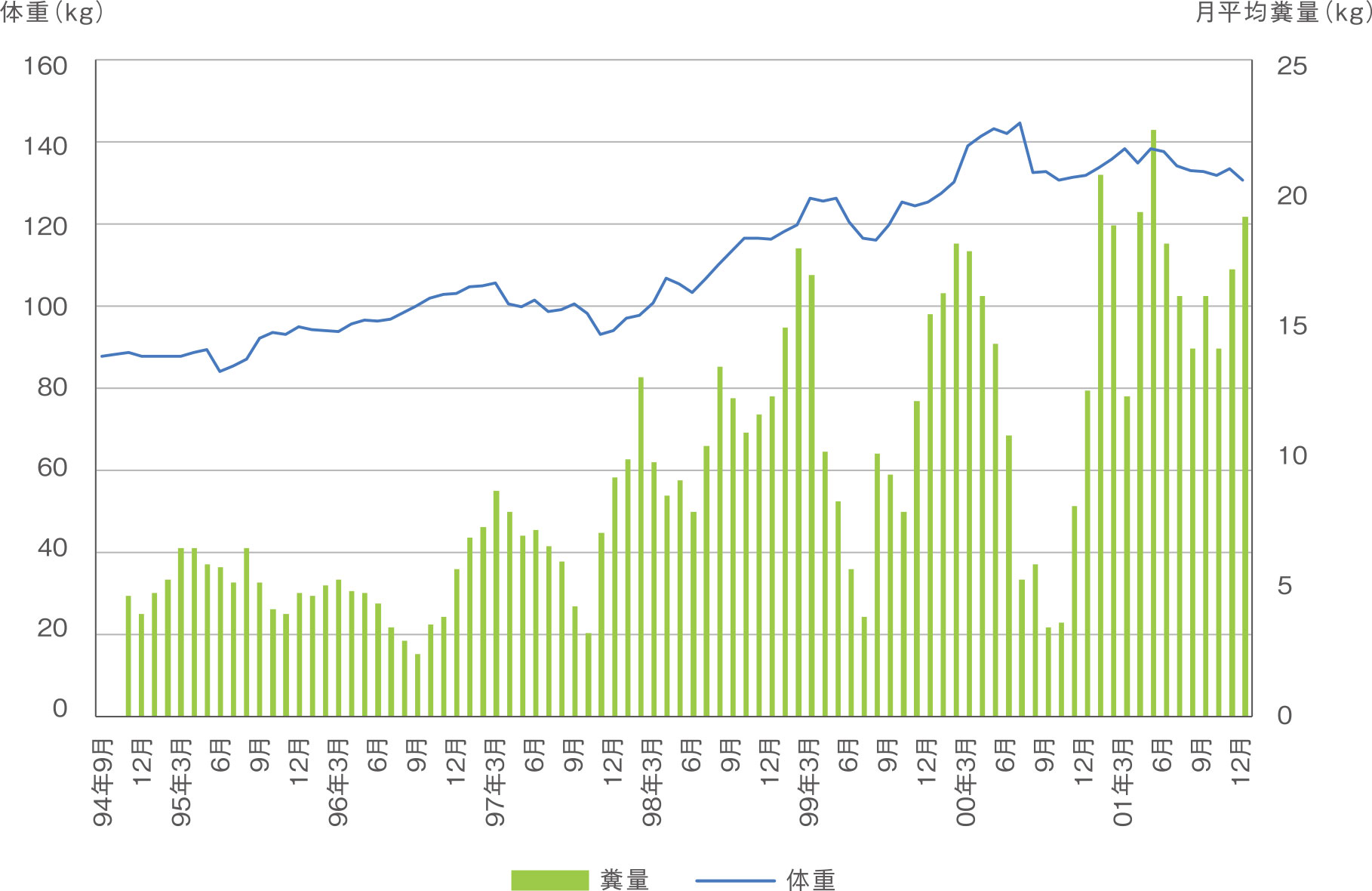

By reviewing the content of the giant panda's diet and making
1994年の飼育開始当初に与えていた1日の食事は、とうもろこし粉、ふすま、馬肉、卵などで作ったパンダ用特製団子1.3㎏、リンゴ1㎏、牛乳1ℓと栄養価の高いものでした。そのためか、主食であるはずの竹は1日に2~5kgしか食べませんでした。オスの「永明」は搬入時より、食欲不振や頻繁な粘液排泄、そして下痢などの症状が認められたため、慢性胃腸炎と診断して投薬治療を行いましたが、顕著な改善は認められませんでした。搬入時には88kgあった体重が、成長期であるのに1年間ではほとんど増えず、「永明」を健康に飼育することが緊急課題となりました。
-

Nutritious diet at the beginning of breeding (2 years old)
-

Bamboo-centric current diet (2 years old)
Eimei's weight and average monthly feces

After consulting with the Chengdu Giant Panda Breeding Research Base and Kitasato University, with whom we are collaborating on digestive research, we changed the diet from high-sugar, high-fat to a high-fiber diet and increased the amount of bamboo forage. In 1998, carrots were introduced, and in 2001, leaf eater biscuits (Mazuri® Primate Browse Biscuit for leaf-eaters (Mazuri® Primate Browse Biscuit) was also introduced in 2001. Since 2009, when we stopped feeding panda milk to animals older than 2 years old, adult animals have been kept in good health with almost no digestive diseases. Since then, the adult animals have been kept in a healthy condition without suffering from digestive diseases.
